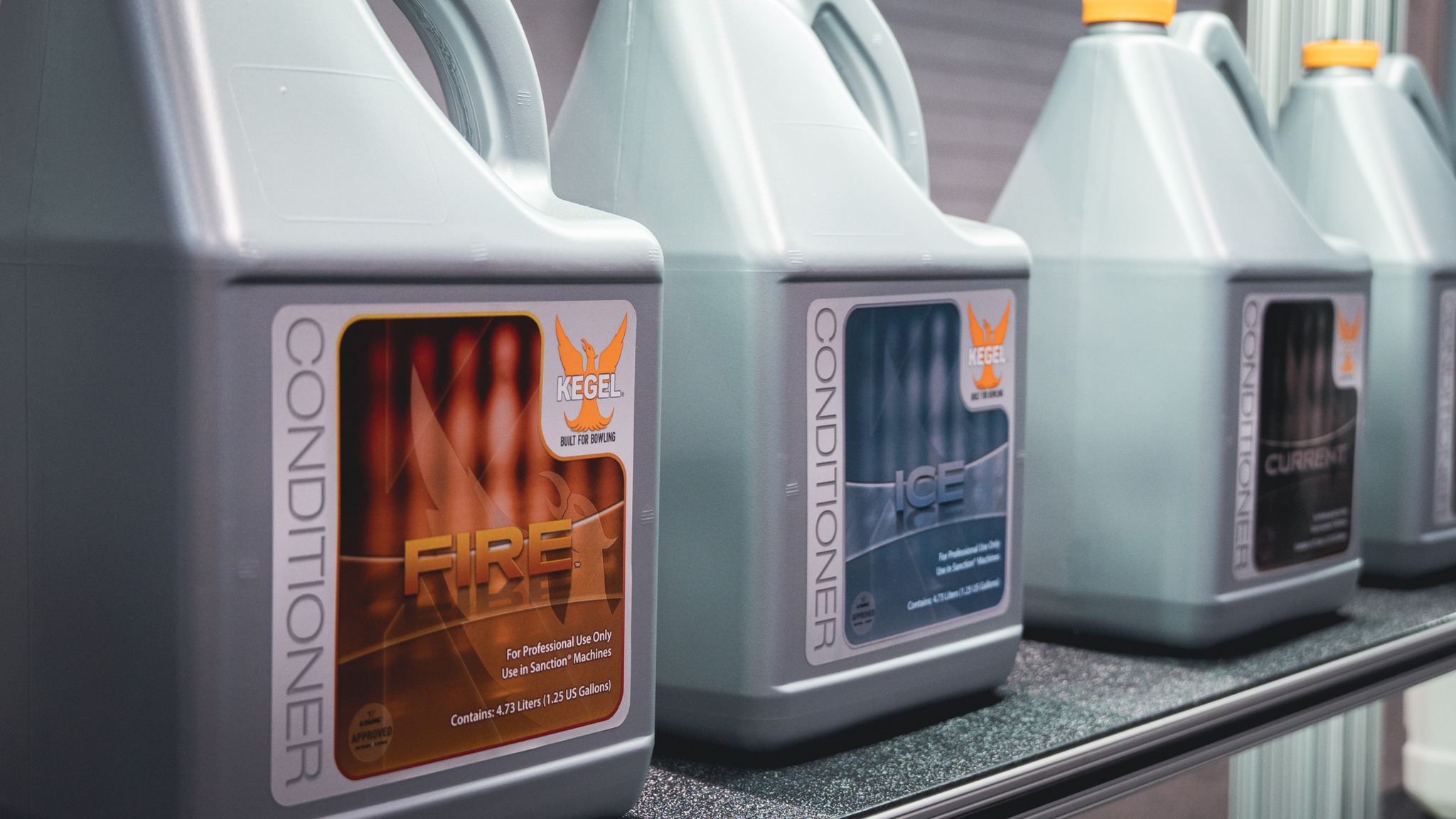Before making any adjustments to the conditioner pattern, make sure that your lane machine is cleaning properly.
Question: Ball reaction is weak after a game and a half. How do I reduce my carry down?
Answer: Typically the applied oil distance forward is too far creating too much conditioner towards the end of the oil pattern. Reduce the applied distance of conditioner and add to the reverse to prevent the loss of durability.
Question: Ball reaction is strong from the beginning and does not weaken making ball reaction unpredictable. How can I tame my back ends down?
Answer: First, try lengthening the pattern, one foot at a time to the desired result. Second is to change to higher speeds earlier in the pattern to raise the level of conditioner at the end of the pattern.
Question: The pattern plays good from the beginning yet loses hold through the night. How do I increase the hold?
Answer: The applied conditioner on the reverse is what creates durability, this area known as the mid-lane provides direction to the breakpoint and dictates score-ability. Starting reverse oil further down the lane increases hold.
Question: My bowler's tell me "the heads dried out". How do I control early hook?
Answer: First, watch ball reaction, bowlers rarely see what they think they see. In most cases the ball actually hooks too early through the mid-lane. Poor lane surface or lack of conditioner in the lay-down area can also be a cause. In this case, slowing the travel speed in the head area on the return will increase the amount of conditioner in this area. Adding loads in Sanction Technology along with a slower machine speed will increase skid through the heads. However, many times today with the amount of conditioner being applied to the "heads", if the ball is hooking early, there are lane surface issues.
Question: If I get the ball right, it "hangs" outside, 2,8,10 city! How do I create more room right?
Answer: This is a hard one to recognize, because it has multiple and opposite causes.
Too much conditioner on the outside (ball skids too far) or in some cases not enough conditioner on the outside (ball loses energy) can cause "hang".
If the ball skids to far, reducing the length and/or volume of the applied conditioner will help.
A wet/dry condition will result in too much skid inside, giving the appearance of "hang" and a loss of energy if the ball enters the dry too early creating a weaker back-end reaction. Many times the amount of conditioner in the middle is the cause of "hang" and not the amount on the outer boards. Reducing the amount of conditioner in the middle, raising the outside, and using speeds to lower the overall height of a pattern will increase ball reaction and create more playable angles.
Adverse lane topography can affect swing. If this is the issue, reducing the outside condition will allow bowlers to play a more direct line to the pocket.
Question: The bowlers seem to move left very quickly because the track dries up. What can I do to prevent this?
Answer: The volume at the end of the pattern should be slightly more than the outside boards. Applying oil to the track on the reverse can provide more durability without greatly affecting overall ball reaction. With Sanction Technology and board-by-board capability, widening loads one board at a time to get the desired affect can provide the quickest way and retain stability.
Question: How do I determine my cleaner ratio?
Answer: The best idea is to phone the manufacturer for their recommendation. All conditioners are different and clean off the lane differently. For example, Defense lane conditioner is usually stripped at a 4 or 5 to 1 ratio, while Offense can be cleaned at 8 or 10 to 1. This is something that you can experiment with, however, it is not recommended to weaken the stripping solution throughout the entire lane to control the back-end reaction. This can cause for poor cleaning and create numerous other issues.
(Note: With the FLEX lane machine, the ability to weaken the cleaner ratio mix ONLY on the back-end is an option to control back-end ball motion. The FLEX lane machine can keep a strong cleaner mix in the front part of the lane where it is needed.)
Question: How does temperature affect my lane conditioner and lane machine?
Answer: If you are using wick machines, it is highly recommended that you store the machine and conditioner in a place where it is room temperature and will remain constant. This will prevent inconsistent flow through the wicks due to changes in viscosity. In some conditioners, a 1-degree change in temperature can affect viscosity by 2 points cps. This is important for those with Sanction Technology to control the pressure and prevent possible damage to the gauge.
Question: Separate or Simultaneous?
Answer: This is an issue related to wick machines more so than Sanction Technology. Most centers try to reduce depletion one of two ways, either running in separate mode or stopping every so many lanes and letting the machine rest. The separate mode is recommended due to the consistent time in between the oil and strip mode. While the lane is being stripped, the wicks have that time to recover and it is the same from lane to lane. A major issue in resting the machine several times across the center is that it creates a stair step effect of gradually less, than more conditioner, repeated across the lanes.
Question: How does buffer brush wear affect my condition and what should be done upon installing a new one?
Answer: The buffer is designed to taper an oil pattern based off the pattern settings and speeds. As a buffer wears the amount of conditioner at the end of a pattern gradually diminishes over time. This is usually not something bowlers notice and will not come to your attention until you are told that you do not have "three units" any longer. Simply put the brush doesn't hold the conditioner as long as when new and "dumps" it further up lane and creates a steeper taper in the pattern. When replacing the buffer after this gradual wear and even though the pattern settings are the same as when the buffer was new, the effect of a new brush will seem dramatic to the average bowler.
It is highly recommended that this be done in August so the change is not taking place mid-season. The frequency of changing the brush is affected by many factors including number of lanes, how good the lane surface is, and what type of lane surface it is. The more friction the faster the wear. Smaller centers with 24 lanes or less may see two years between buffer changes. Centers with 24 lanes and up may change the brush every year to every six months in centers with a lot of lanes.



